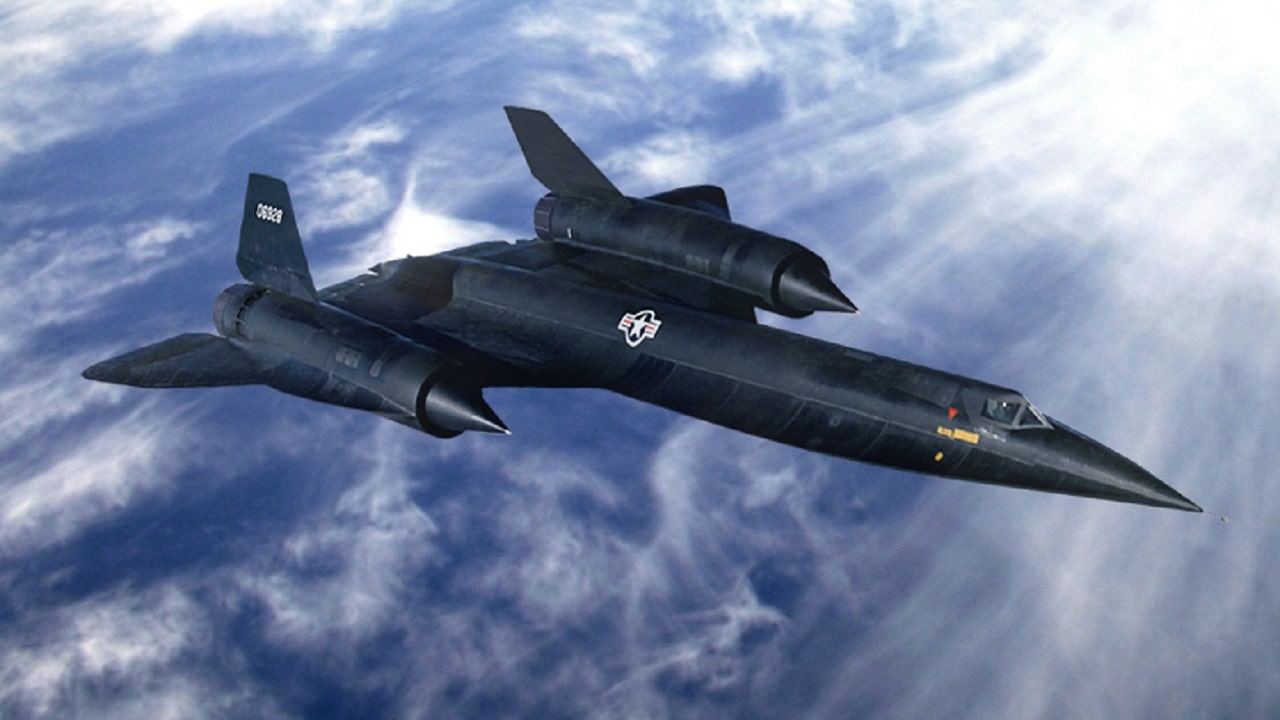Meet the A-12 Oxcart: The CIA and the Air Force teamed up in the 1950s with Clarence “Kelly” Johnson’s Lockheed Skunk Works to work on some of the most successful reconnaissance planes in the world.
The CIA had contracted Johnson to build the first reconnaissance aircraft, the U-2.
Johnson designed the plane in less than 13 months, which was incredible. They began overflights of the Soviet Union in 1956, and the Russians were able to track the aircraft, even at the edge of space, at 80,000 feet.
However, the Agency, the Air Force, and Johnson knew they needed a replacement, an aircraft much faster to better protect itself from the missiles they knew would be coming. Under the code name “Oxcart,” Johnson began work on the A-12.
The level of secrecy was extremely high for two reasons. One reason was the advanced technology Lockheed was developing, while the second was that the United States secretly bought materials to build these jets from within the Soviet Union.
A-12 Oxcart: The US Builds Its Super-secret Plane With Help From the Soviets
CIA Historian David Robage, in his book, “Archangel: CIA’s Supersonic A-12 Reconnaissance Aircraft,” detailed some of the incredible exploits the US had to do to get the A-12 built. And about the men who flew it.
The work and testing required secrecy. After flying the U-2 and then the A-12, the team moved the testing to a remote part of the desert in Nevada called Groom Lake, a dried-up lake bed. It was called “Area 51.”
A heat issue created a dilemma for Johnson in the design phase. Flying an aircraft for hours on end at Mach 3 would melt the steel and aluminum used in the production of the aircraft.
The skin of the aircraft would heat up to over 800 degrees. Inside, the cockpit would heat up to 500 degrees.
The pilots had to wear a special refrigerated space suit to keep from burning up. One solution worked: to make 90 percent of the aircraft with a titanium alloy.
Titanium was needed, but the US didn’t have much of a resource at the time. They decided to buy titanium from the world’s biggest supplier, the Soviet Union.
Keeping the Soviets in the dark was tough, but the CIA used shell companies and third parties. The A-12 would fly over the Soviet Union and outrun fighters and missiles built with the titanium supplied by the Soviets.
It was the opposite of the Lenin quote, “We will hang the last capitalist with the rope he sold us.” The irony.
What’s Faster, the SR-71 or the A-12?
The SR-71 is known as the fastest military production aircraft. But what most people don’t realize is that the A-12 was faster.
The Pratt & Whitney J58 engine fitted to the A-12 was the first USAF engine qualified to operate for extended time at speeds exceeding Mach 3 and altitudes above 80,000 feet. Later, the SR-71 used the same engine.
This engine’s unique feature involves bleeding a measure of the high-pressure air from the compressor, bypassing the combustion chambers and turbine, and injecting this air into the front end of the afterburner.
The combination of the air bleed-bypass system feeding air directly to the afterburner works like a ramjet. Because conventional aircraft fuel would be too volatile at such high temperatures, a new fuel called JP-7 was developed.
“A cesium-laced fuel additive to dramatically reduce the radar signature of the plane’s massive engine exhausts and afterburner plumes by creating an ionizing cloud behind the aircraft to help conceal its entire rear aspect from radar waves,” wrote The Drive in 2019.
Other Features
The aircraft was painted a deep shade of blue, almost black, because it was learned that this color dissipated heat faster than bare titanium. The A-12 was first flown in 1962, became operational in 1967, and flew for the CIA until late 1968. Its top speed was Mach 3.29, or 2,260 mph.
The A-12 was a single-seat aircraft and flew reconnaissance missions over North Korea and Vietnam. When the program ceased with the CIA, the Air Force purchased 11 of the two-seat version named the SR-71.
Lockheed produced fifteen A-12s, three YF-12As, and thirty-one SR-71s. The 49 reconnaissance aircraft completed more than 7,300 flights, with 17,000 hours in the air. More than 2,400 hours had been above Mach 3.
The A-12 was a great leap in technology and a worthy predecessor to the SR-71.
About the Author:
Steve Balestrieri is a 19FortyFive National Security Columnist. He served as a US Army Special Forces NCO and Warrant Officer. In addition to writing for 19FortyFive, he covers the NFL for PatsFans.com and is a member of the Pro Football Writers of America (PFWA). His work was regularly featured in other military publications.

